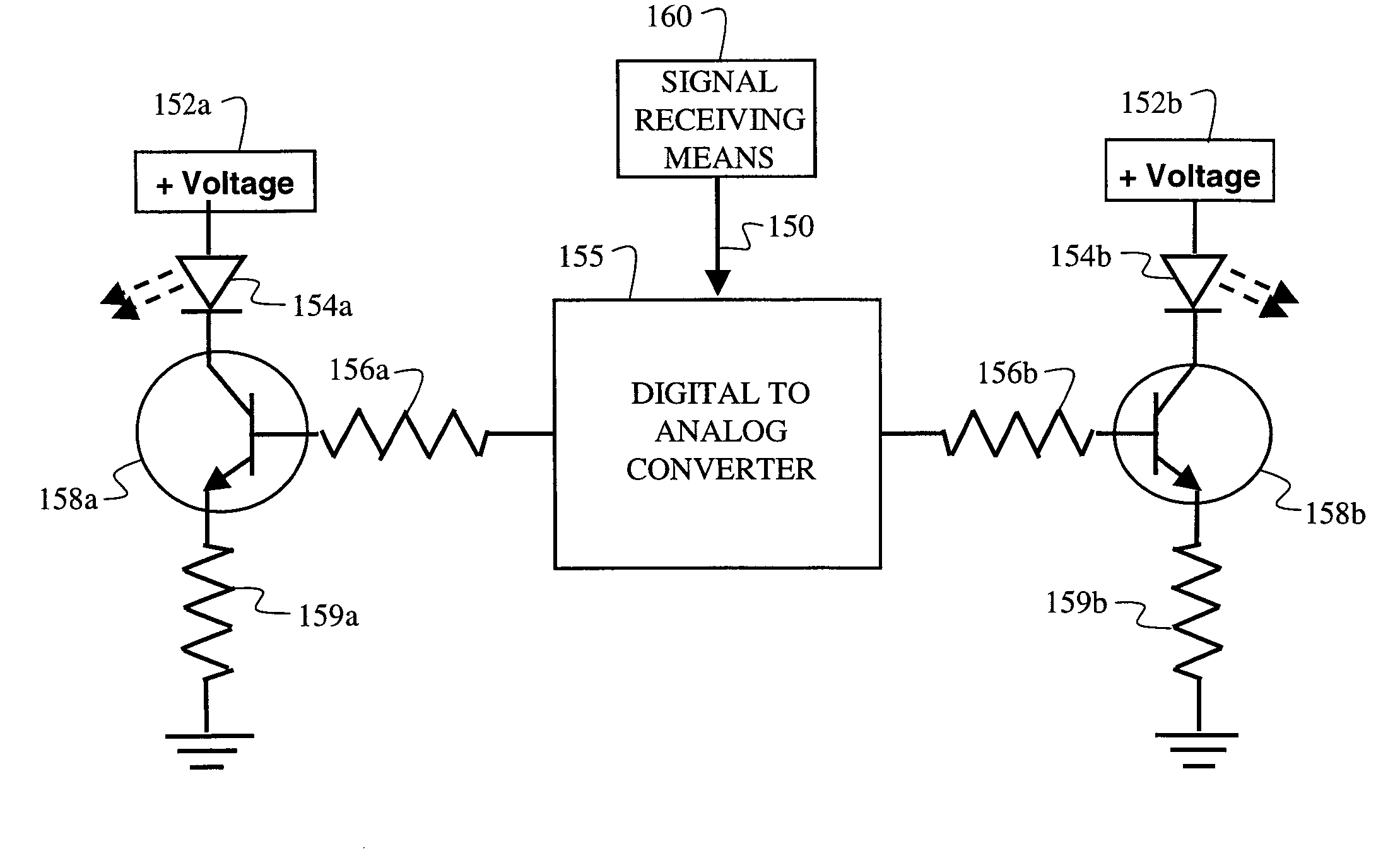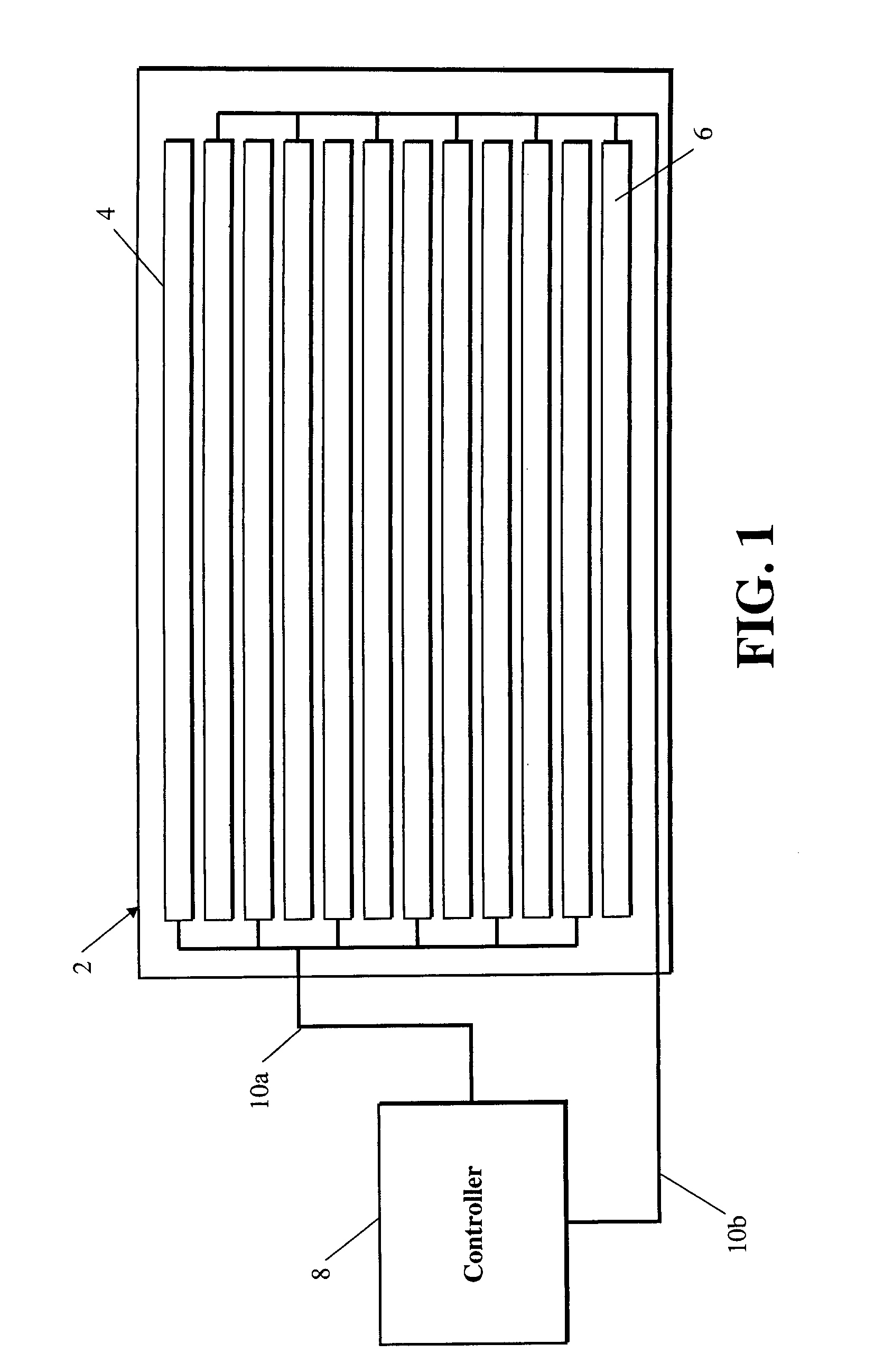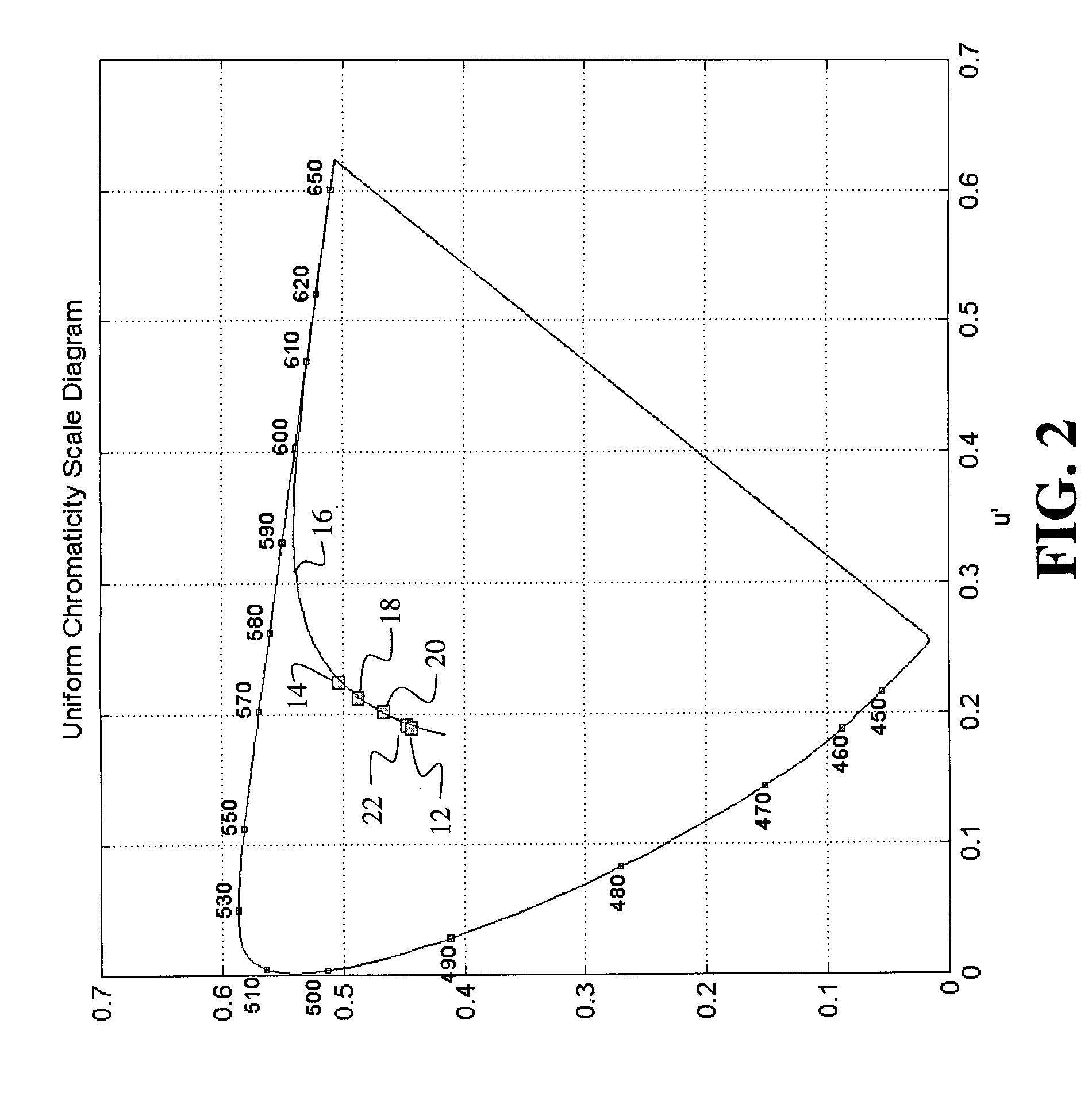Lamp with adjustable color
a technology of adjustable color and lamp, which is applied in the direction of discharge tube/lamp details, discharge tube luminescnet screens, electric discharge lamps, etc., can solve the problems of complex control mechanism, need for a microprocessor, and easy error
- Summary
- Abstract
- Description
- Claims
- Application Information
AI Technical Summary
Benefits of technology
Problems solved by technology
Method used
Image
Examples
Embodiment Construction
[0030]The present invention provides a white-light, electro-luminescent lamp 2 as shown in FIG. 1, having an adjustable spectral power distribution emission, wherein the spectral power distribution approximates the spectral power distribution of a plurality of standard daylight distributions as specified by the CIE. This lamp 2 includes two light-emitting elements 4, 6. The first light-emitting element 4 emits light within each of three wavelength bands, including a first wavelength band between 440 and 520 nm, a second wavelength band between 520 and 600 nm, and a third wavelength band between 600 and 680 nm; wherein an integrated spectral power within the first wavelength band is higher than the second wavelength band, and the integrated spectral power within the second wavelength band is higher than the third wavelength band. The second light-emitting element 6 emits light within each of three wavelength bands, including a first wavelength band between 440 and 520 nm, a second wa...
PUM
 Login to View More
Login to View More Abstract
Description
Claims
Application Information
 Login to View More
Login to View More - R&D
- Intellectual Property
- Life Sciences
- Materials
- Tech Scout
- Unparalleled Data Quality
- Higher Quality Content
- 60% Fewer Hallucinations
Browse by: Latest US Patents, China's latest patents, Technical Efficacy Thesaurus, Application Domain, Technology Topic, Popular Technical Reports.
© 2025 PatSnap. All rights reserved.Legal|Privacy policy|Modern Slavery Act Transparency Statement|Sitemap|About US| Contact US: help@patsnap.com



